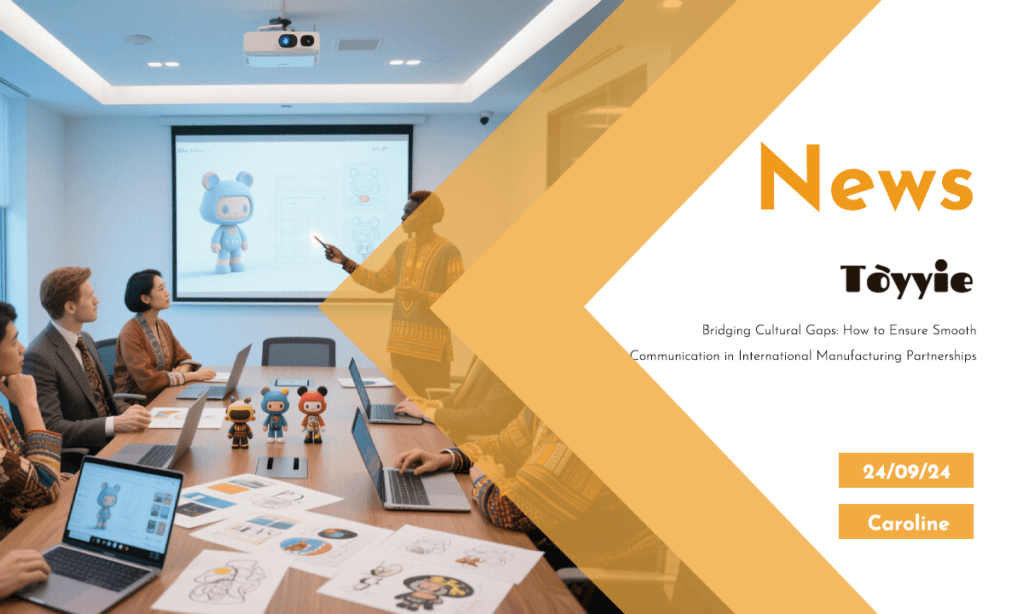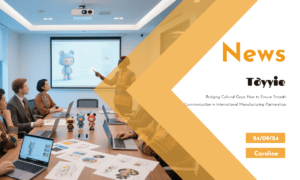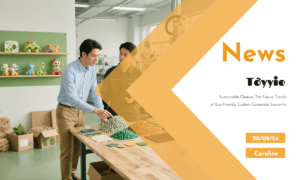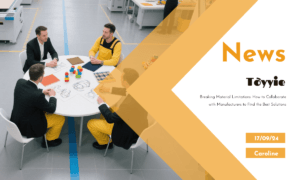📌 Introduction📌
In the world of international manufacturing, cultural differences can often create roadblocks to effective communication. If you’re working with manufacturers across borders, chances are you’ve encountered a situation where something was misunderstood or a process was delayed due to cultural nuances. From my own experience in the toy manufacturing industry, especially in producing collectible designer toys, these challenges are common but not insurmountable.
As a toy manufacturer who has worked with clients from all over the world, I’ve seen firsthand how even small misunderstandings can cause significant delays, added costs, or frustration on both sides. But more importantly, I’ve also learned how to overcome these hurdles. Today, I want to share some insights that can help you navigate the cultural differences in your manufacturing partnerships to ensure smooth, effective communication.
This isn’t just about understanding language barriers—it’s about recognizing and respecting cultural subtleties, time expectations, working styles, and even the way we approach problem-solving. Let’s dive into how we can work together to make international partnerships stronger and more efficient.
Understanding the Impact of Cultural Differences in Manufacturing 🧠
When you engage in a manufacturing partnership that crosses international borders, there’s more to consider than just logistics and timelines. Culture plays a massive role in how teams communicate, make decisions, and manage projects. In my experience, what might seem like a minor detail to one party can be a major issue to another, purely due to cultural expectations.
For instance, in some cultures, giving direct feedback might be seen as rude, while in others, it’s expected and appreciated. In some countries, the emphasis is on long-term relationships and trust, while others prioritize efficiency and speed. These differences can influence everything from how emails are worded to how conflicts are resolved.
If you’re a designer or business owner partnering with a manufacturer overseas, it’s important to understand that even things like how meetings are conducted, how deadlines are treated, and what constitutes “polite” communication can vary greatly. The key to avoiding miscommunication is first acknowledging that these differences exist and then actively working to bridge the gap.
Why Clear Communication Matters in Cross-Cultural Manufacturing 📢
In the fast-paced world of toy design and manufacturing, especially in a niche as dynamic as designer toys , communication is critical. Each step of the process—from initial concept sketches to prototyping, and finally, to large-scale production—requires clear and consistent dialogue between all parties involved.
When cultural differences aren’t addressed, it can lead to a breakdown in this dialogue. Misunderstandings might result in production delays, incorrect specifications, or even damaged relationships. For instance, a client might assume that their request for a revision is understood, but the manufacturer, coming from a different cultural background, might not interpret the urgency or the exact nature of the change in the same way.
From our perspective as manufacturers, we often see how small cultural miscommunications can snowball into larger problems if not addressed early on. This is why it’s so important to establish clear communication channels from the very beginning of a project and maintain them throughout.
Start with Mutual Respect and Open Dialogue 🙏
The first and most important step in overcoming cultural differences is to approach the relationship with mutual respect and a genuine desire to understand the other party’s perspective. Acknowledge that cultural differences exist, and don’t be afraid to bring them into the conversation. It’s okay to ask your partner about their preferred communication style, or how they typically handle decision-making.
From our end, we’ve learned to open up about how we do things and ask our clients about their expectations. For example, when working with clients from the U.S., we’ve noticed that there’s often an expectation for quick responses and direct communication. In contrast, clients from some Asian countries may prioritize building a relationship first before diving into business. Recognizing these patterns early on can prevent misunderstandings.
By setting the tone of respect and openness, both parties can feel more comfortable addressing potential issues before they become real problems.
Be Explicit About Expectations 📝
One of the biggest challenges we’ve faced in international collaborations is the assumption that both sides are on the same page when, in reality, cultural differences have caused a disconnect. To avoid this, I’ve found that being extremely explicit about expectations is crucial.
When you’re working with a manufacturer in a different country, leave nothing to assumption. Spell out exactly what you need, when you need it, and what your priorities are. Likewise, encourage your manufacturing partner to do the same.
For example, if you’re sending over a design file for prototyping, don’t just assume the manufacturer understands the level of detail required or the timeline you’re working with. Be clear about what revisions you expect, and ask for confirmation at every step. This level of explicit communication can feel tedious, but it’s far better to be thorough than to discover a problem after weeks of work.
Set Up Regular Check-Ins and Use the Right Tools 🛠️
In any manufacturing process, things are bound to change along the way. This is especially true in the toy industry, where design iterations and material adjustments are common. However, when working with manufacturers in different time zones or cultural settings, it’s essential to have regular check-ins to ensure that everyone is still on the same page.
At our company, we’ve found that scheduling weekly or bi-weekly calls (depending on the complexity of the project) helps prevent miscommunication. We use video calls, as they allow us to pick up on non-verbal cues that emails or messages might miss. Plus, seeing each other face-to-face fosters a sense of partnership and trust.
We’ve also adopted collaboration tools like Slack, Trello, and Zoom to streamline communication. These tools allow for real-time updates and reduce the chances of something getting lost in translation. The key is finding a system that works for both you and your manufacturing partner. Some cultures might prefer more formal communication via email, while others might be comfortable with instant messaging for quick updates. Again, it’s all about aligning expectations.
Be Mindful of Time Zones and Holidays ⏰
One of the most practical yet often overlooked aspects of cross-cultural collaboration is time management. If you’re working with a manufacturer halfway around the world, it’s essential to account for the time zone difference when setting deadlines and scheduling meetings.
In my experience, misunderstandings about time zones can lead to frustration on both sides. For example, a client might expect a response within hours, not realizing that the manufacturer’s team is already out of the office for the day. Likewise, manufacturers might assume a more relaxed deadline, not fully grasping the urgency felt by the client.
To avoid this, we make it a point to clearly communicate our office hours and the time zones we’re working in. Additionally, we respect our partners’ local holidays and working practices, and we encourage our clients to do the same. This mutual understanding prevents unnecessary delays and shows that both parties respect each other’s schedules.
Adapt Your Communication Style 🗣️
Another critical lesson I’ve learned in cross-cultural manufacturing partnerships is the importance of adapting your communication style. What works in one country may not work in another, so being flexible is key.
For example, in some cultures, indirect communication is the norm. Rather than giving direct feedback, people might use softer language or hint at issues to avoid confrontation. On the other hand, in cultures that value directness, this indirect approach can be confusing or even frustrating.
As a manufacturer, we’ve adapted by paying close attention to our clients’ communication styles and adjusting our approach accordingly. If we’re working with a client who prefers more detailed explanations and regular updates, we’ll provide that. On the other hand, if a client values brevity and quick decisions, we’ll make sure our communications are concise and to the point.
It’s not about changing who you are but rather about finding a middle ground that works for both sides.
Invest in Cultural Training or Support 📚
Finally, if you’re working with international partners frequently, consider investing in cultural training for your team. Understanding the cultural norms, business etiquette, and communication styles of the countries you’re working with can go a long way in preventing misunderstandings.
At our company, we’ve seen how even a basic understanding of cultural differences can improve relationships with our clients. Whether it’s knowing how to greet someone, understanding the importance of hierarchy in certain cultures, or simply being aware of local customs, this kind of knowledge shows respect and can foster a more positive working relationship.
Conclusion: Building Stronger Cross-Cultural Manufacturing Partnerships 🏆
Working across cultures in the toy manufacturing industry can be challenging, but it’s also incredibly rewarding. The key to success is clear, open, and respectful communication. By acknowledging cultural differences, setting explicit expectations, and using the right tools and strategies, you can overcome these challenges and build strong, effective partnerships with manufacturers worldwide.
Whether you’re a toy designer looking to bring your vision to life or a company looking for a reliable manufacturing partner, understanding and bridging cultural gaps will help ensure your project runs smoothly. At the end of the day, successful collaboration is all about mutual respect and a commitment to working together towards a common goal.
So, the next time you’re working on an international project, take a step back and think about how cultural differences might be affecting your communication. With the right approach, you can turn potential roadblocks into opportunities for growth and innovation. Let’s work together to ensure your designs not only cross borders but also exceed expectations.









